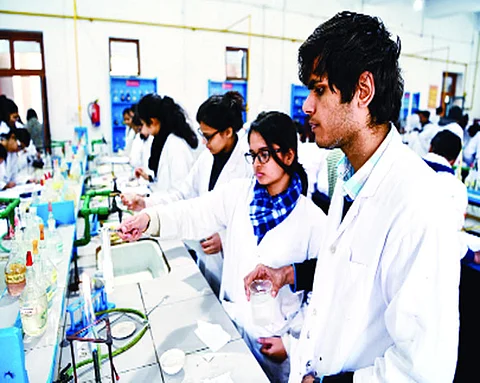
- Home
- Live Blog
- Breaking News
- Top Headlines
- Cities
- NE News
- Sentinel Media
- Sports
- Education
- Jobs

The research ecosystem plays the crucial role in innovation that is critical for accelerating the growth process of a country. The Anusandhan National Research Foundation (ANRF) Act, 2023, gave a defining push for strengthening India’s scientific and industrial research ecosystem. Failure on the part of the ANRF to utilise any of its budgeted fund of Rs 2000 crore during the financial year 2024-25 paints a grim picture of the widening gap between government intent and policy implementation. A review of the country’s research ecosystem conducted by the Parliamentary Standing Committee on Education, Women, Children, Youth and Sports laid bare a persistent disconnect between research ambition and systemic deficiency. The panel found that the Prime Minister’s Research Fellowship (PMRF) 2.0 Scheme that was announced to further improve the quality of research in higher educational institutions and nurture a new generation of innovative researchers across the country had not been implemented till July 2025, which reinforces this hard reality. Another key finding of the Committee that deserves urgent attention from the corridors of power is that more than half of the eligible Higher Education Institutions (HEIs) have not received the benefits of One Nation One Subscription – an initiative to provide country-wide access to international scholarly research articles and journal publications to students, faculty and researchers of all government-run HEIs and Research & Development Institutions. The Committee has rightly observed that a research ecosystem requires substantial physical infrastructure, laboratories, computational resources, and other facilities, and the provision of additional funds for covering the operational expenses for maintaining these is crucial for the sustainability of quality research work. It points out that global practice among renowned universities is to cover these costs, including infrastructure development and maintenance, through overheads or indirect costs on research grants. Lack of this provision in research funding norms in the country poses a stumbling block in advancing critical research work, as lack of adequate funding for meeting overhead costs often makes procurement of advanced equipment and establishment of required laboratories and machinery difficult for a government-run HEI or an R&D institution. The committee’s insistence on the provision of supplementary allocations to meet these costs helps institutions like IITs, central universities, and HEIs to bolster their infrastructure and sustain high-quality research endeavours effectively and make them globally competitive. The central government reiterated on the floor of the parliament that the ANRF aims to toprovide high-level strategic direction for research, innovation and entrepreneurship in the field of natural sciences, including mathematical sciences, engineering and technology, environmental and earth sciences, health and andagriculture, and scientific and technological interfaces of humanities and social sciences, to promote, monitor and provide support as required for such research. While this demonstrates that the government is committed to giving a strategic push to research activities in the country, the administrative inertia that is posing hurdles in achieving the goals cannot be overlooked. Approval of the Research Development and Innovation (RDI) Scheme by the central government with a corpus of Rs. 1 lakh crore is another major initiative taken by the government to boost private sector participation in research. The scheme aims to provide long-term financing at low or nil interest rates to spur private sector investment in RDI and has been designed to overcome the constraints and challenges in funding of the private sector and seeks to provide growth and risk capital to sunrise and strategic sectors to facilitate innovation, promote adoption of technology and enhance competitiveness. The government informed the parliament that the RDI Scheme has identified key strategic and sunrise sectors such as energy security, climate action, quantum technologies, artificial intelligence, biotechnology, semiconductors, and the digital economy, with flexibility to include others based on national priorities. It aligns with the ‘Make in India’ mission by promoting indigenous development of critical technologies and reducing import dependence, thereby strengthening domestic high-tech manufacturing. It also supports the ‘Startup India’ mission by providing equity and long-term financing to deep-tech startups, fostering innovation, and enabling commercialisation through a dedicated Deep-Tech Fund of Funds and specialised implementing agencies. The ecosystem of research in HEIs, R&D institutions and the private sector being at par is essential to bolster private and public sector collaboration for rapid growth that is led by indigenous innovation. The government must ensure that institutional capacities between the private and public sectors are equal and that their research activities synergise rather than compete with each other so that the national goal is prioritised. It will also end overlapping research work and ensure that funds earmarked, be they budgeted by the government or invested by the private sector, are channelled for enhancing the quality of research and sustainability of research. While the central government has anchored the schemes and policies to strengthen research ecosystem in the country to the national priorities of Make in India and the reduction of import dependence, the objectives will remain unachieved if the structural and institutional gaps remain unaddressed.